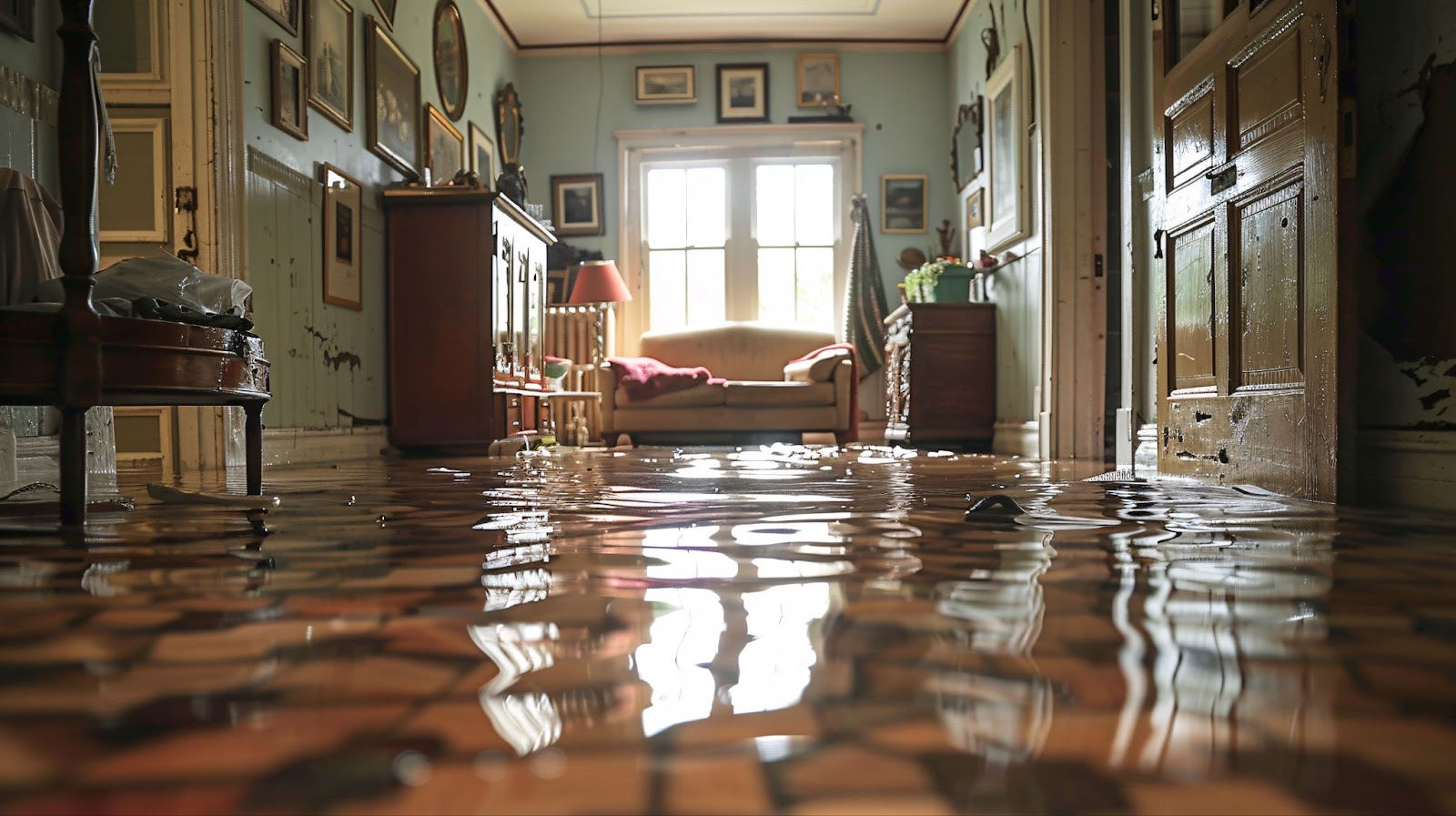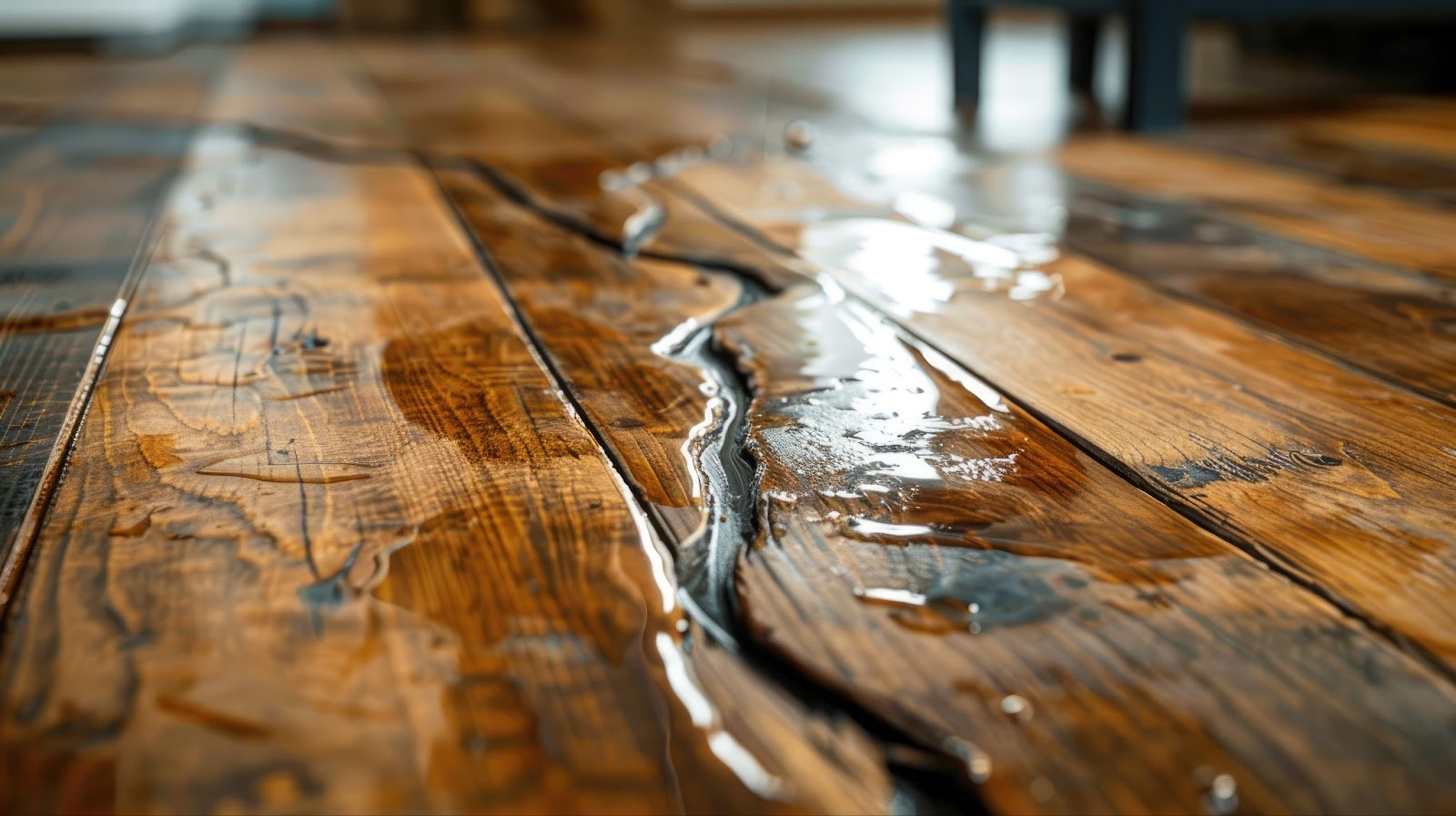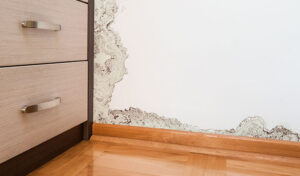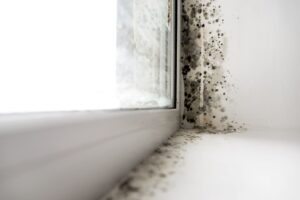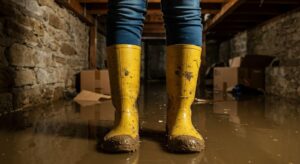Detecting water damage in your home early is crucial for maintaining the integrity and safety of your home. Water damage doesn’t merely ruin your belongings; it weakens structures, creates electrical hazards, and leads to mold growth, posing serious health risks. The earlier you spot and address water damage, the less extensive and expensive the repairs will be.
The purpose of this blog is to educate homeowners on recognizing the signs of water damage. By understanding these indicators, you will take swift action to protect your home and ensure a healthy living environment. Let’s dive into the key signs of water damage that you should never ignore.
Visible water stains and discoloration
Water stains appear as unsightly yellowish-brown blotches or streaks on ceilings, walls, and floors. They indicate water infiltration from leaks in plumbing, roof damage, or condensation buildup.
Stains often appear on ceilings below bathrooms or kitchens, around windows and doors, and on basement walls due to potential foundation leaks or high groundwater levels. Floors in bathrooms, kitchens, and basements also show signs of water damage from leaks or flooding.
Identifying these stains early allows you to address the underlying issue before it escalates, saving you from costly repairs and further damage.
Musty odors
Musty odors are unmistakable — a damp, earthy smell that clings to the air. This scent, caused by mold and mildew producing volatile organic compounds (VOCs), is often the first sign of their presence. The pungent, lingering odor becomes stronger over time and can permeate your entire home.
How persistent damp smells indicate hidden water damage
Persistent damp smells often signal hidden water damage. Even without visible signs, a musty odor indicates trapped moisture, creating an ideal environment for mold and mildew. This suggests water is seeping into walls, under floors, or behind ceilings, quietly causing damage. Ignoring these smells allows mold to spread, potentially leading to health issues and structural damage.
Detecting these odors early can prompt investigation and address the moisture source, preventing extensive damage and ensuring a healthier living environment.
Peeling or bubbling paint and wallpaper
Peeling or bubbling paint and wallpaper indicate moisture behind walls. Water disrupts the bond between the paint or wallpaper and the wall surface, often from leaks, high humidity, or poor ventilation. Signs include small bubbles, peeling edges, and sagging sections.
How water damage causes paint and wallpaper to lose adhesion
Water damage weakens the adhesive properties of paint and wallpaper. Moisture breaks down adhesive bonds, causing detachment from the wall. Initially subtle, the damage escalates quickly, leading to blistering paint and peeling wallpaper. Over time, large sections become unsightly and require extensive repair.
Warped or buckling floors
Water seeps into flooring materials, causing them to expand, contract, and warp. Wooden floors swell and warp as the wood fibers expand unevenly. Laminate floors, though more water-resistant, can buckle as layers separate from excess moisture. Tiles, while less susceptible to warping, can become loose and lift if the underlying adhesive is compromised by water.
Signs of warped wood, buckling laminate, or swollen tiles
Warped wood floors appear uneven, with planks lifting at the edges or forming a “cupped” shape, creating gaps or a spongy feel when walked on. Buckling laminate floors exhibit raised seams and distorted planks, turning a smooth surface into a trip hazard.
Swollen tiles show as bulges or uneven patches with pronounced grout lines, and in severe cases, tiles may pop off completely, revealing a damaged subfloor.
Visible mold growth
Mold thrives in damp, humid environments. Common hotspots include bathrooms, where steam from showers creates ideal conditions; basements, prone to dampness and poor ventilation; and kitchens, especially around sinks and under appliances. Look for mold in corners, around windows, and behind furniture where air circulation is minimal.
Health risks associated with mold
Mold poses serious health risks by releasing spores into the air, triggering respiratory issues, especially in those with asthma or allergies. Symptoms include coughing, sneezing, and throat irritation. Prolonged exposure can lead to chronic respiratory problems, weakened immune systems, and severe health issues from mycotoxins, including neurological symptoms.
Increased utility bills
An unexplained spike in your water bill often signals hidden leaks. Cracks in pipes or loose joints cause constant water seepage, even when no appliances or fixtures are in use, leading to a noticeable increase in your monthly expenses. These leaks can occur in walls, under floors, or beneath your foundation, making them hard to detect without monitoring your utility bills.
Monitoring your water usage is crucial for early leak detection and conservation. Keep an eye on your water meter and compare monthly bills. A sudden, unexplained increase should prompt immediate investigation.
Damp or wet carpets and rugs
Damp or wet carpets and rugs indicate water seeping into your flooring. You might feel squishy areas underfoot, notice discoloration, or smell a musty odor. These wet patches may appear suddenly after a spill or leak or develop slowly from a hidden issue. Pay attention to unusual dampness, as it often points to problems like a leaky pipe or poor ventilation.
Persistent dampness in carpets and rugs creates an ideal environment for mold growth. Mold spores thrive in moist conditions and spread rapidly once they take hold.
This growth damages your carpets and poses significant health risks, including respiratory problems and allergies. The longer the moisture remains, the harder it becomes to eradicate mold, leading to more extensive and costly repairs.
Sagging ceilings or walls
Sagging ceilings or walls indicate serious water damage and pose significant structural risks. Water infiltrates and weakens the materials, causing them to bow, crack, or collapse. This damage can result from roof leaks, burst pipes, or prolonged moisture exposure. The accumulated water strains the structure, jeopardizing your home’s safety and stability.
How to identify areas at risk of collapse
Identifying areas at risk requires vigilance. Look for bulging, warping, or discoloration in ceilings and walls. Listen for creaking or unusual noises indicating shifting or settling. Touch suspicious areas gently to check for softness or sponginess, suggesting weakened materials. Pay attention to recurring damp spots or water stains that don’t dry out, as they often point to ongoing issues.
If you notice any of these signs, act immediately. Remove valuable or heavy items from the area and avoid spending time beneath sagging sections. Contact a professional to assess the damage and provide necessary repairs to restore your home’s safety and structural integrity.
Sounds of dripping or running water
Hearing unexplained dripping or running water can be a vital clue to hidden leaks. These sounds often indicate water escaping from pipes or fixtures, even when all taps are off. Listen carefully in quiet moments, especially at night when ambient noise is lower. Focus on areas around sinks, toilets, and behind walls. You might also hear hissing or gurgling sounds, signaling water moving through unexpected pathways.
Investigating unexplained water noises is crucial to prevent extensive damage. Ignoring these sounds allows leaks to persist, leading to mold growth, structural weakening, and increased utility bills. Early detection helps address small issues before they escalate.
If you hear persistent water sounds, check visible plumbing for leaks and inspect hidden areas like under sinks and behind appliances. If you can’t locate the source, call a professional for a thorough inspection.
Cracks in walls or foundation
Water silently undermines your home’s structure over time. When it infiltrates walls or the foundation, it seeps into tiny crevices, causing materials to expand and contract with temperature changes.
This constant movement weakens the structure, leading to cracks. Even minor cracks can expand, compromising your home’s integrity and causing issues like settling or shifting foundations.
Signs that cracks may be related to water damage
Identifying water-related cracks involves looking for specific signs. Horizontal or stair-step cracks in the foundation often indicate external water pressure buildup. In walls, water-related cracks might be accompanied by damp spots, discoloration, or mold growth.
Pay attention to cracks near windows and doors, as these areas are particularly vulnerable. If cracks widen over time or new ones appear after heavy rainfall, water damage is likely the cause.
Total Flood and Fire Restoration
For expert assistance, trust Total Flood and Fire Restoration. Their skilled team offers comprehensive services, from initial assessment to complete remediation. With advanced equipment and extensive experience, they ensure thorough and effective restoration.
Don’t let water damage compromise your home — contact Total Flood and Fire Restoration today for reliable, professional help. Your home’s safety and your peace of mind are their top priorities.

